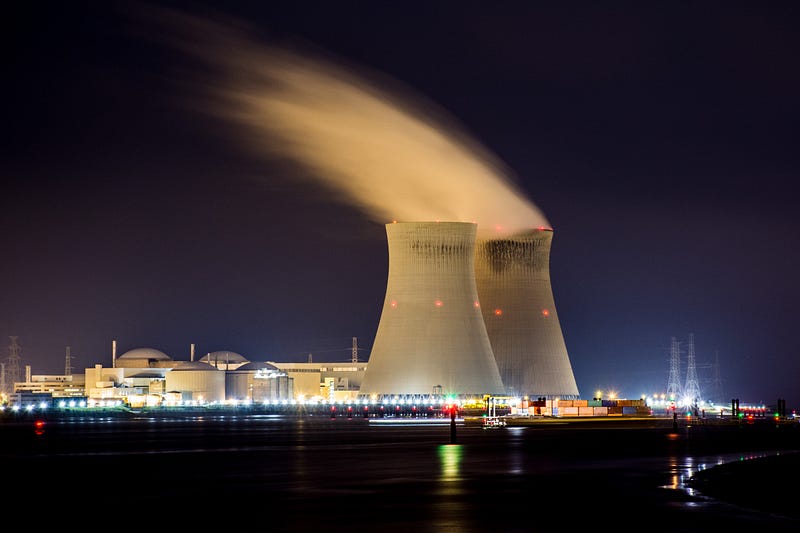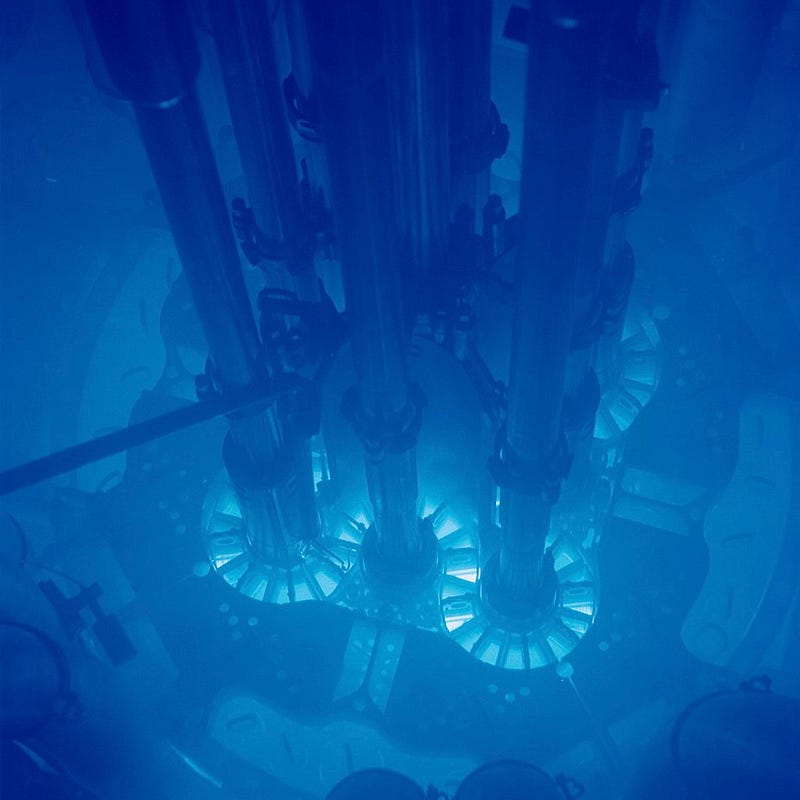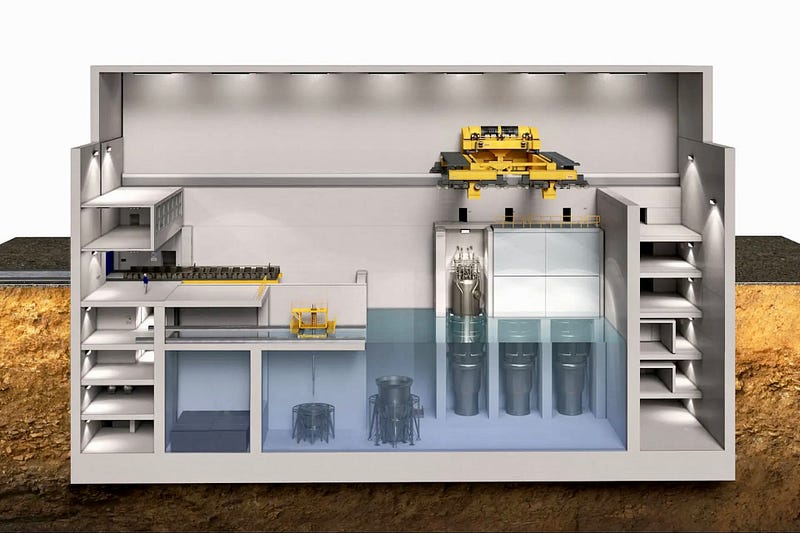Revolutionizing Nuclear Power: The Dawn of Small Modular Reactors
Written on
Chapter 1: The Promise of Nuclear Energy
Nuclear power plays a vital role in combating climate change. Despite the associated risks, it boasts the lowest death rate per gigawatt compared to other energy sources and is among the least carbon-intensive options available. The necessity for its reliable and compact energy is essential as we transition to carbon-neutral energy grids, particularly to complement solar and wind power. However, the high costs and inflexibility of traditional nuclear energy have deterred many from this crucial resource. Fortunately, recent regulatory approvals for a groundbreaking reactor design in the U.S. signal a renaissance in nuclear energy. Welcome to NuScale's innovative Small Modular Reactor (SMR) technology.
SMRs are not an entirely new concept; the idea has existed for decades. The high costs associated with current nuclear reactors stem from the need for custom designs and construction for each facility. This approach ensures that reactors meet specific power needs while considering safety and environmental factors, but it often results in lengthy development times, during which power requirements and local conditions may change.

The Expensive Reality of Traditional Nuclear Plants
SMRs address these challenges through a modular strategy. Instead of assembling a large reactor on-site, multiple small reactors can be manufactured in a factory and shipped ready for installation. This method offers numerous advantages, including increased efficiency, accuracy, and cost-effectiveness due to the controlled manufacturing environment. Additionally, utilizing the same reactor design multiple times can significantly reduce production costs over time.
The benefits extend to power plant operators, with shorter construction timelines and adaptable capacity for adjusting the number of reactors based on demand. These improvements could make nuclear energy more competitive within the renewable energy sector.
So, if SMRs are so advantageous and have been on the table for years, why haven't they been implemented yet?
Section 1.1: The Challenge of Miniaturization
To create compact reactors that can be easily transported, existing designs have required significant modifications. Most commercial reactors today utilize Light Water Reactor (LWR) or Pressurized Water Reactor (PWR) designs, which, while efficient, are too large to be easily scaled down. Consequently, various companies have explored less-tested concepts, such as helium-cooled and molten salt reactors.

Section 1.2: Regulatory Hurdles and Safety Concerns
The timeline for developing these new reactor designs remains uncertain, complicating predictions for their commercial readiness. Additionally, safety must be thoroughly validated before these designs can enter production. Many of these new systems also rely on high-enrichment fuels, which could result in significantly more nuclear waste compared to current reactors. For further insights, refer to my article "The Future of Nuclear Power Has A Major Problem."
These challenges have delayed the necessary regulatory approvals for SMRs until recently. On July 29, 2022, U.S. nuclear regulators certified NuScale’s SMR for operation, marking a significant milestone.
Chapter 2: NuScale's Innovative Approach
NuScale's success stems from its decision to utilize a PWR design without drastically downsizing the reactors. Each module measures 20 meters in height and 9 meters in width. While this makes them somewhat less portable than some designs, it benefits from established production methods, as similar technology is used in nuclear submarines. This familiarity allows for smoother regulatory navigation. Moreover, NuScale's reactors operate on low-enrichment fuel (5%), significantly reducing nuclear waste output.
Each NuScale SMR generates 77 MW, capable of powering approximately 62,000 homes, with a plant able to accommodate up to 12 modules. These reactors are housed in specially designed containment buildings that enhance safety, potentially allowing for their placement closer to energy consumers, thereby reducing transmission losses.

The Upcoming Test of NuScale's Technology
NuScale is constructing a power plant at the Idaho National Laboratory featuring six modules, achieving a total output of 462 MW. This facility is expected to be operational by 2030, with energy already contracted by power distributors. The U.S. will be the first country to harness SMRs for residential power supply.
This project will serve as a crucial launchpad for NuScale, aiding in the establishment of an SMR manufacturing facility, refining the installation process, and showcasing the speed, cost-effectiveness, flexibility, and power of their SMR technology. If successful, NuScale anticipates a high demand for their reactors as utilities seek to replace aging infrastructure.
In conclusion, a new era of nuclear power is on the horizon. With lower costs, increased flexibility, and enhanced efficiency, the future looks promising. Coupled with advancements in nuclear waste disposal through innovative methods like Deep Isolation, we may very well be on the verge of a nuclear renaissance. Thankfully, these groundbreaking technologies are emerging just as our planet grapples with the repercussions of climate change.